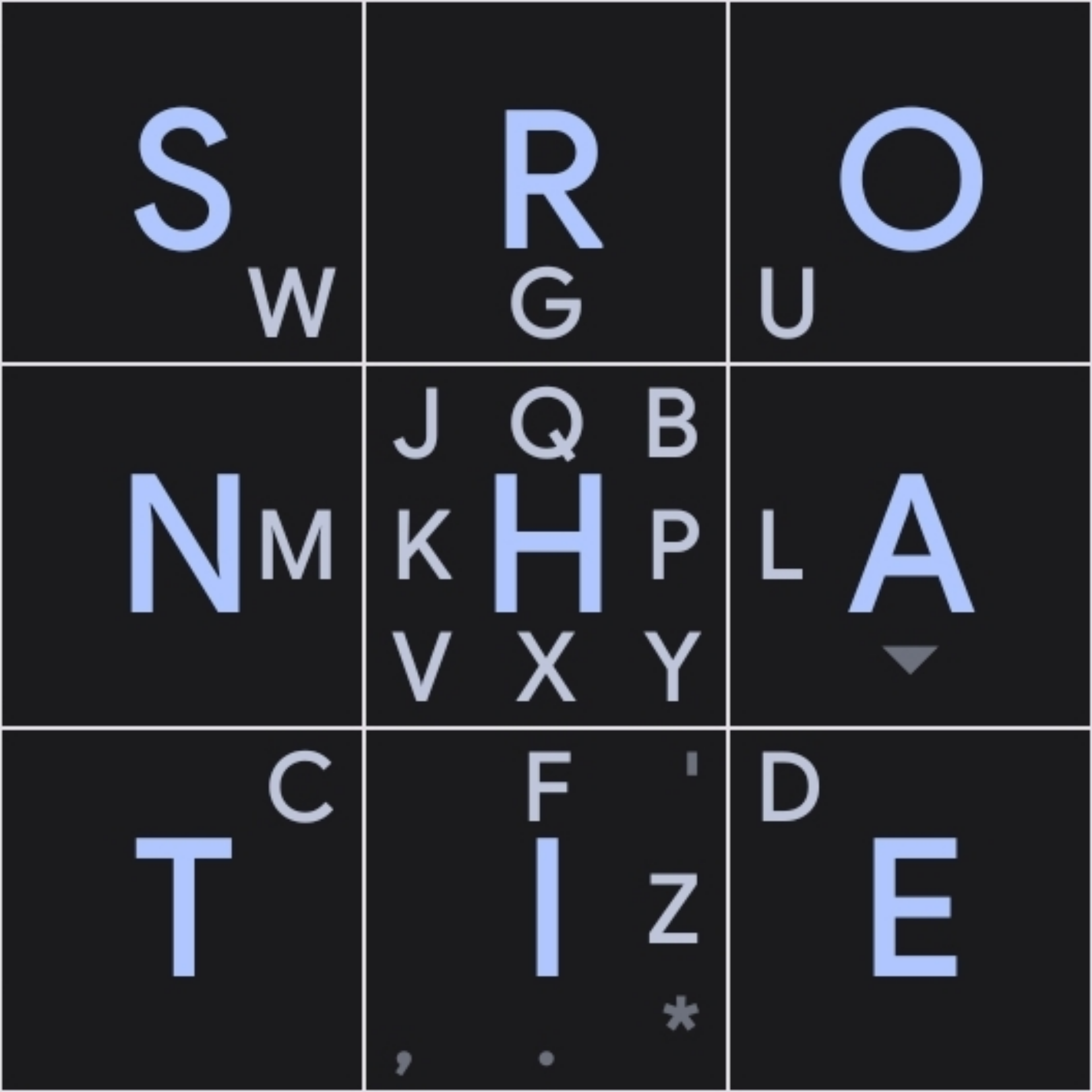On desktop, I use the AI-designed Halmak Keyboard, and its had great results.
Rather than manually picking letter positions, Halmak was designed by an evolutionary algorithm, based on a given set of criteria, and sample text.
I designed the original english thumb-key layout manually, with trial-and-error, and based essentially on 3 criteria:
- Letter frequency
- Alternating thumbs
- Thumbs come from the bottom corners, so lower and edge tiles are easier than higher.
But I did not take into account things like digrams / trigrams, and I don’t know enough about evolutionary algorithms to do it.
Would anyone be interested in tackling this problem?


I do agree that digrams/trigrams turn out to be the most important thing in this kind of layout. The MessagEase layout seems to get a lot of digrams right, even if it’s only by accident. I think the real problem is that we don’t have a very good model for the relative costs of things like non-alternating thumbs and sliding from the same box after a tap. I think the optimization algorithm would probably not be that hard relative to quantifying the costs of different placements.